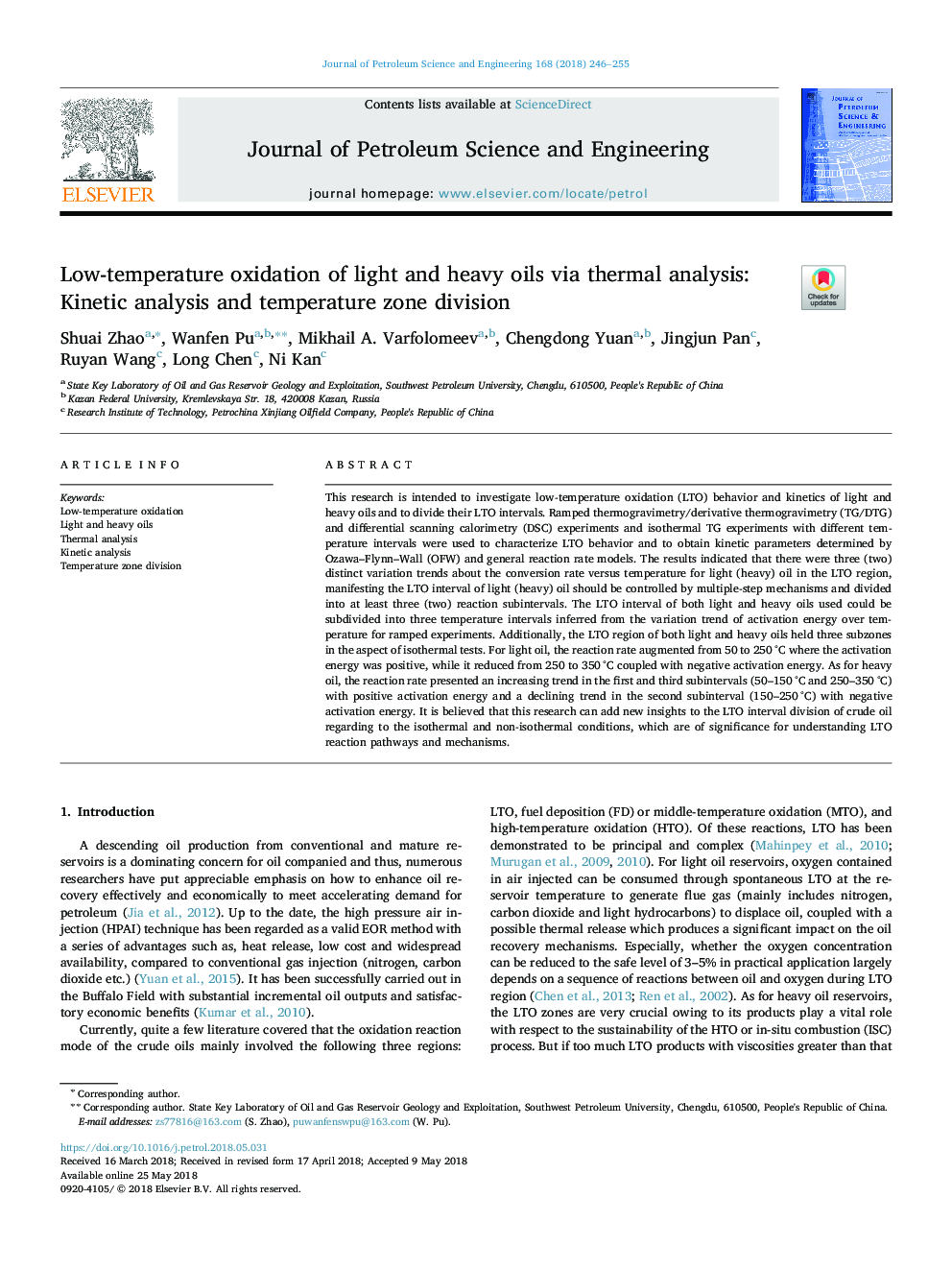| کد مقاله | کد نشریه | سال انتشار | مقاله انگلیسی | نسخه تمام متن |
|---|---|---|---|---|
| 8124690 | 1522773 | 2018 | 10 صفحه PDF | دانلود رایگان |
عنوان انگلیسی مقاله ISI
Low-temperature oxidation of light and heavy oils via thermal analysis: Kinetic analysis and temperature zone division
ترجمه فارسی عنوان
اکسیداسیون کم دمای روغن های سبک و سنگین از طریق تجزیه و تحلیل حرارتی: تجزیه و تحلیل جنبشی و تقسیم منطقه دما
دانلود مقاله + سفارش ترجمه
دانلود مقاله ISI انگلیسی
رایگان برای ایرانیان
کلمات کلیدی
اکسیداسیون کم دما، روغن های سبک و سنگین، تجزیه و تحلیل حرارتی، تجزیه و تحلیل سینتیک، تقسیم منطقه دما
موضوعات مرتبط
مهندسی و علوم پایه
علوم زمین و سیارات
زمین شناسی اقتصادی
چکیده انگلیسی
This research is intended to investigate low-temperature oxidation (LTO) behavior and kinetics of light and heavy oils and to divide their LTO intervals. Ramped thermogravimetry/derivative thermogravimetry (TG/DTG) and differential scanning calorimetry (DSC) experiments and isothermal TG experiments with different temperature intervals were used to characterize LTO behavior and to obtain kinetic parameters determined by Ozawa-Flynn-Wall (OFW) and general reaction rate models. The results indicated that there were three (two) distinct variation trends about the conversion rate versus temperature for light (heavy) oil in the LTO region, manifesting the LTO interval of light (heavy) oil should be controlled by multiple-step mechanisms and divided into at least three (two) reaction subintervals. The LTO interval of both light and heavy oils used could be subdivided into three temperature intervals inferred from the variation trend of activation energy over temperature for ramped experiments. Additionally, the LTO region of both light and heavy oils held three subzones in the aspect of isothermal tests. For light oil, the reaction rate augmented from 50 to 250â¯Â°C where the activation energy was positive, while it reduced from 250 to 350â¯Â°C coupled with negative activation energy. As for heavy oil, the reaction rate presented an increasing trend in the first and third subintervals (50-150â¯Â°C and 250-350â¯Â°C) with positive activation energy and a declining trend in the second subinterval (150-250â¯Â°C) with negative activation energy. It is believed that this research can add new insights to the LTO interval division of crude oil regarding to the isothermal and non-isothermal conditions, which are of significance for understanding LTO reaction pathways and mechanisms.
ناشر
Database: Elsevier - ScienceDirect (ساینس دایرکت)
Journal: Journal of Petroleum Science and Engineering - Volume 168, September 2018, Pages 246-255
Journal: Journal of Petroleum Science and Engineering - Volume 168, September 2018, Pages 246-255
نویسندگان
Shuai Zhao, Wanfen Pu, Mikhail A. Varfolomeev, Chengdong Yuan, Jingjun Pan, Ruyan Wang, Long Chen, Ni Kan,
